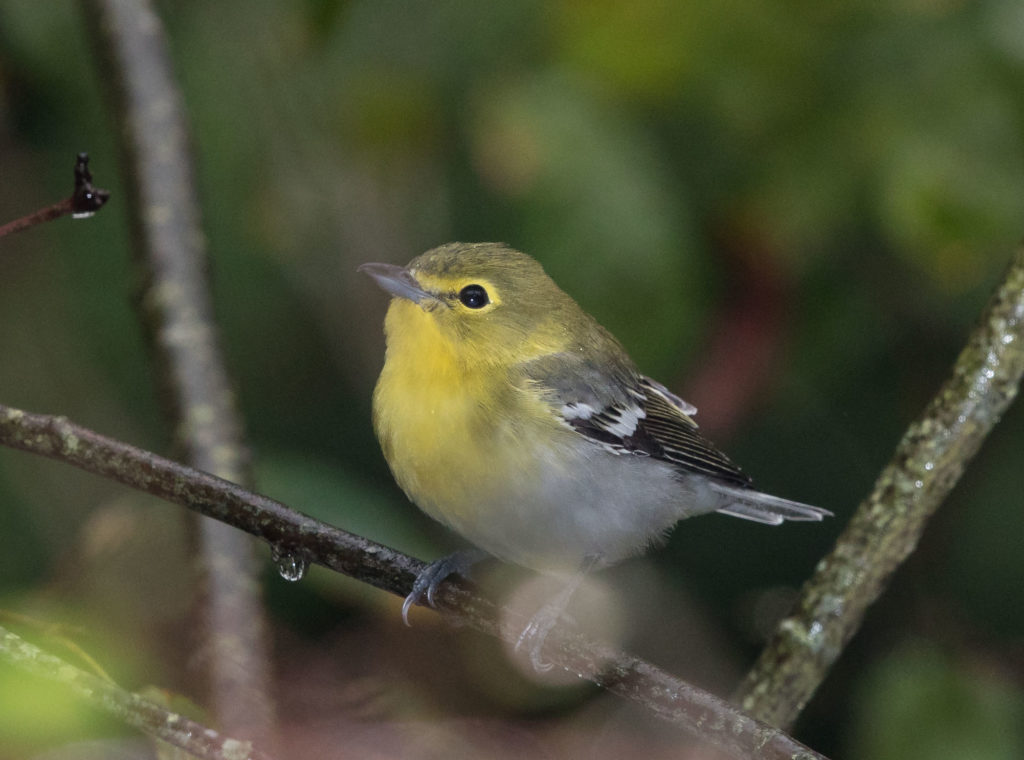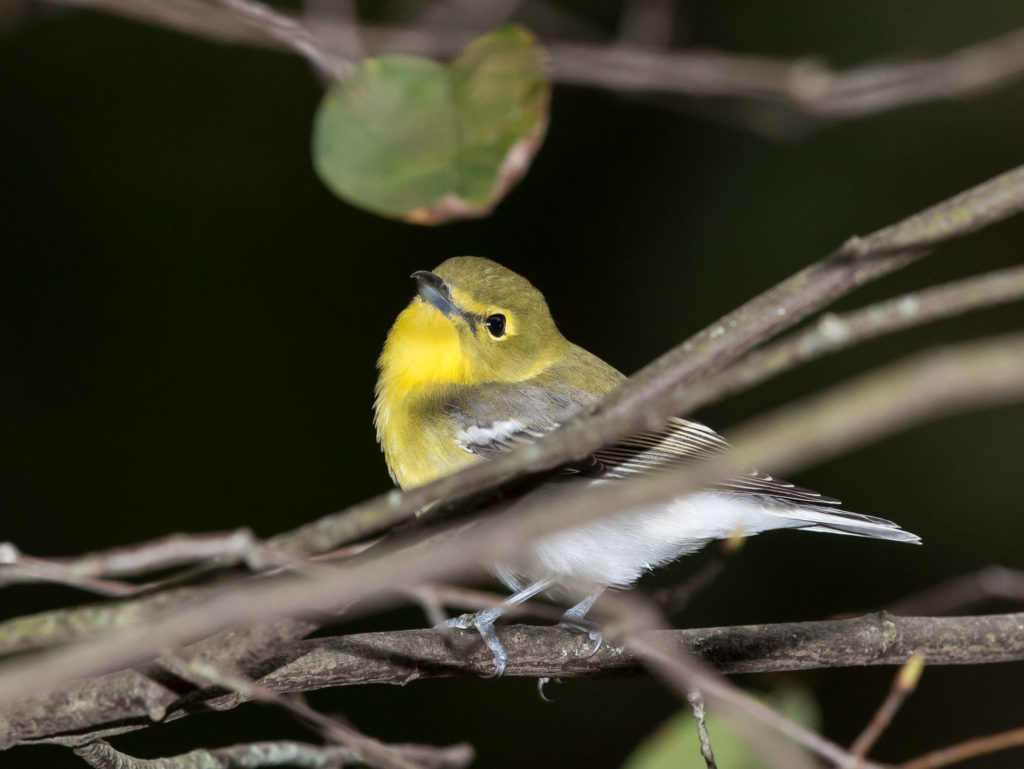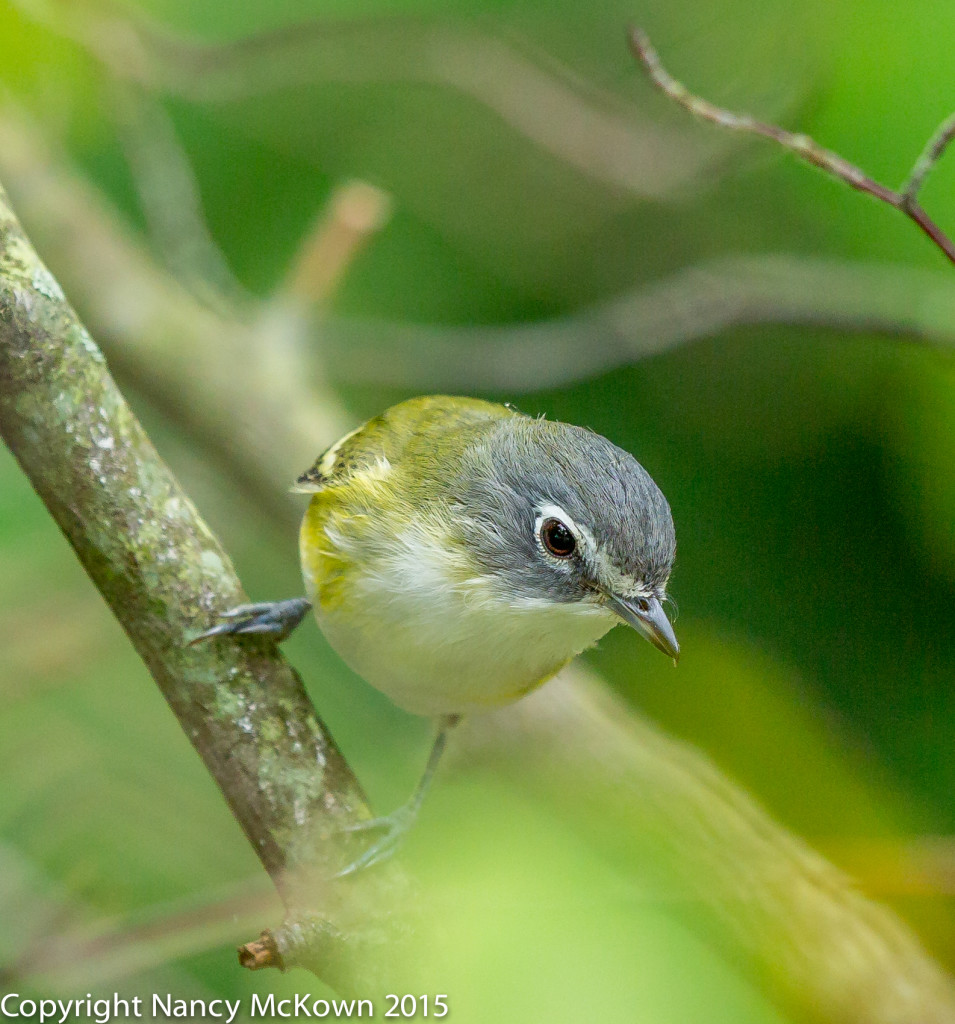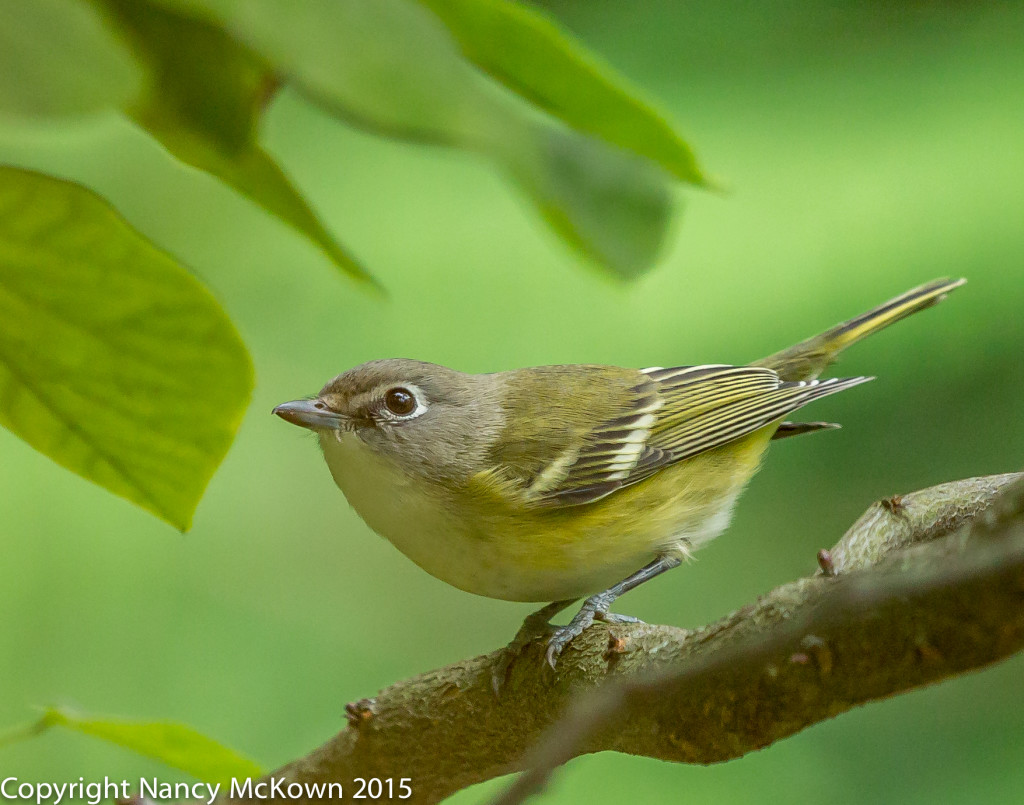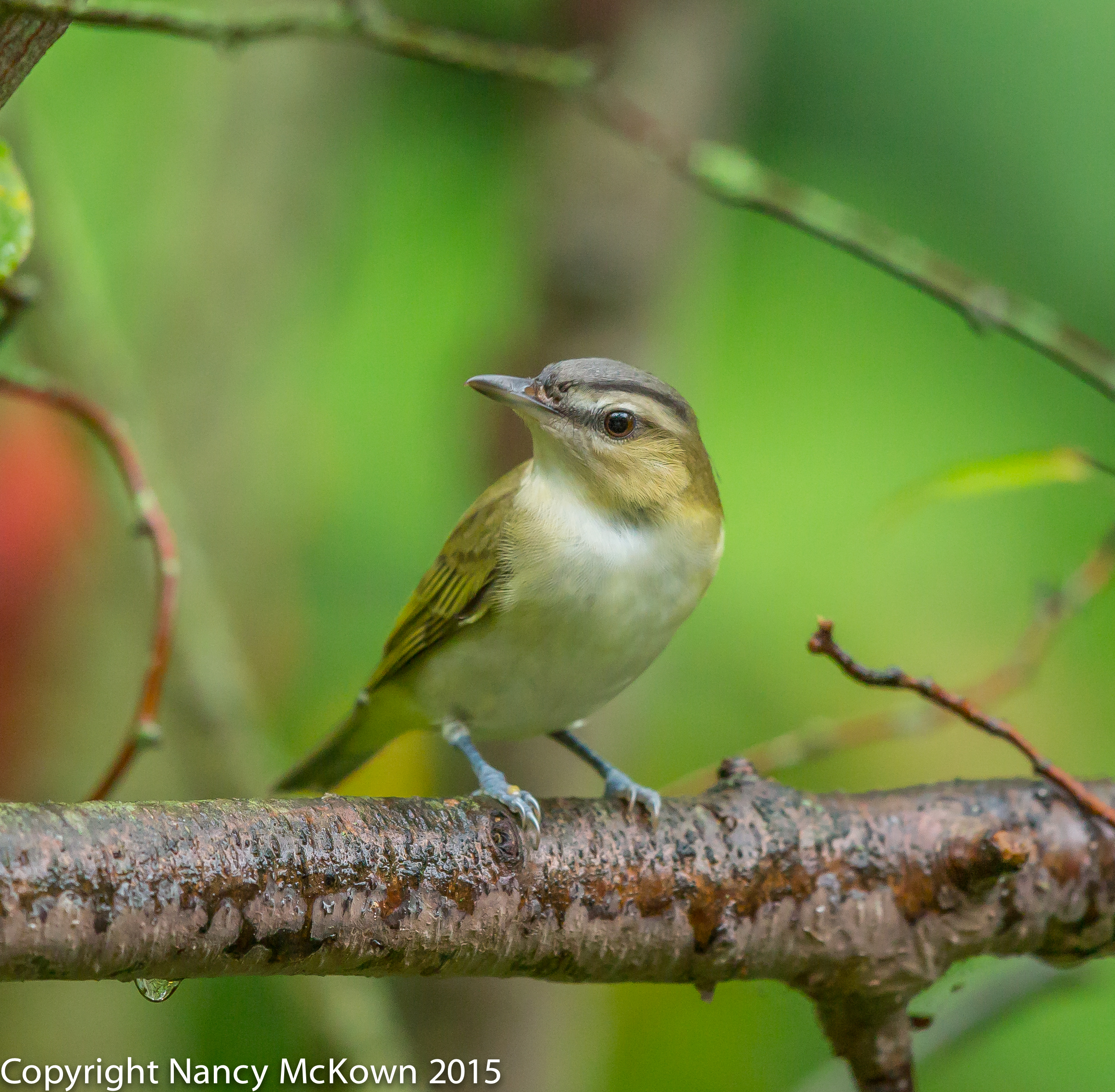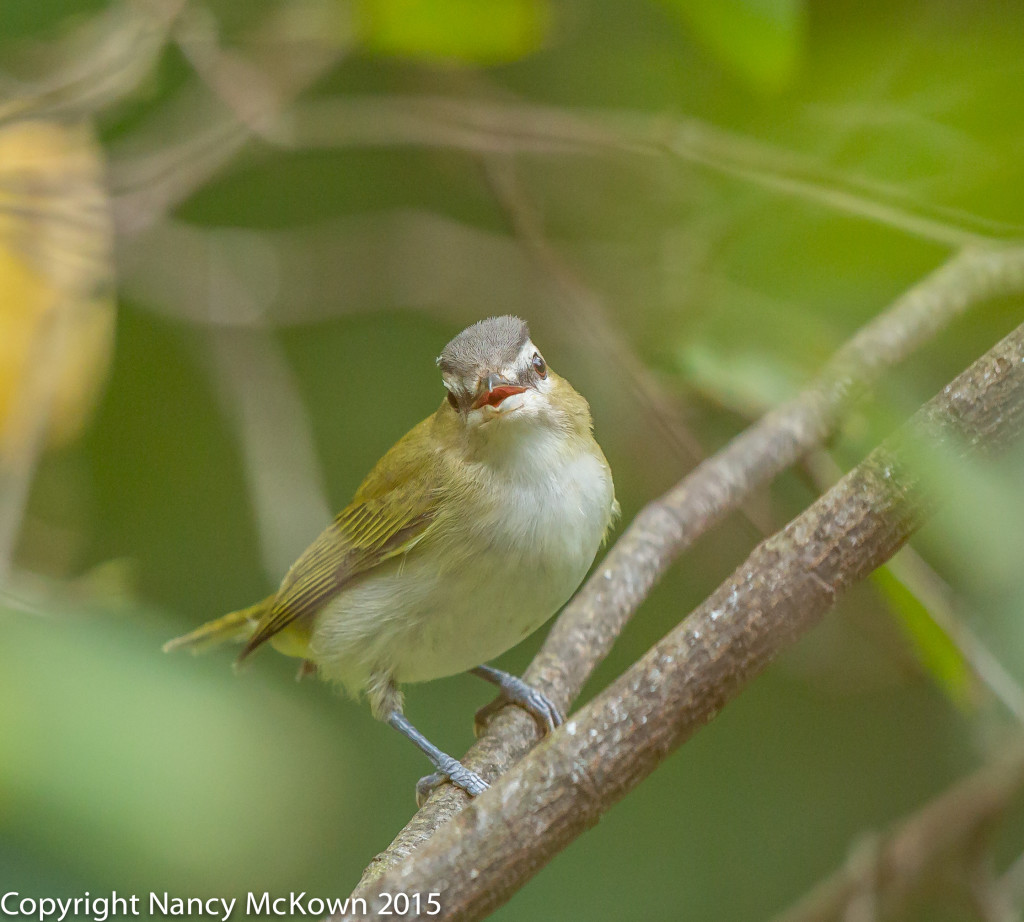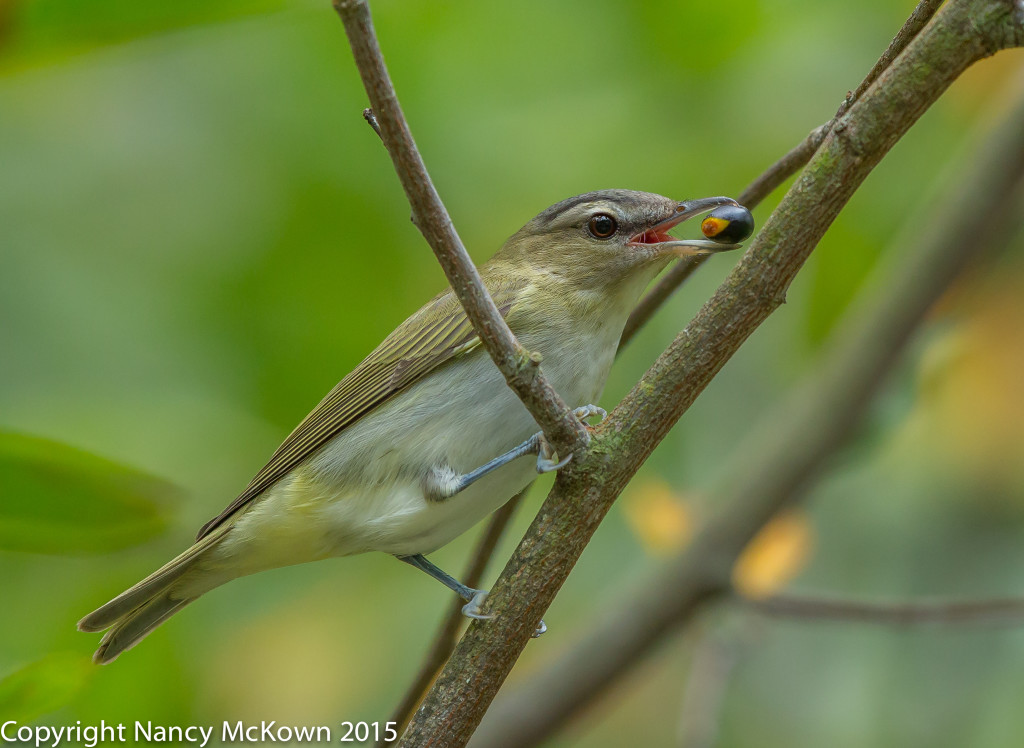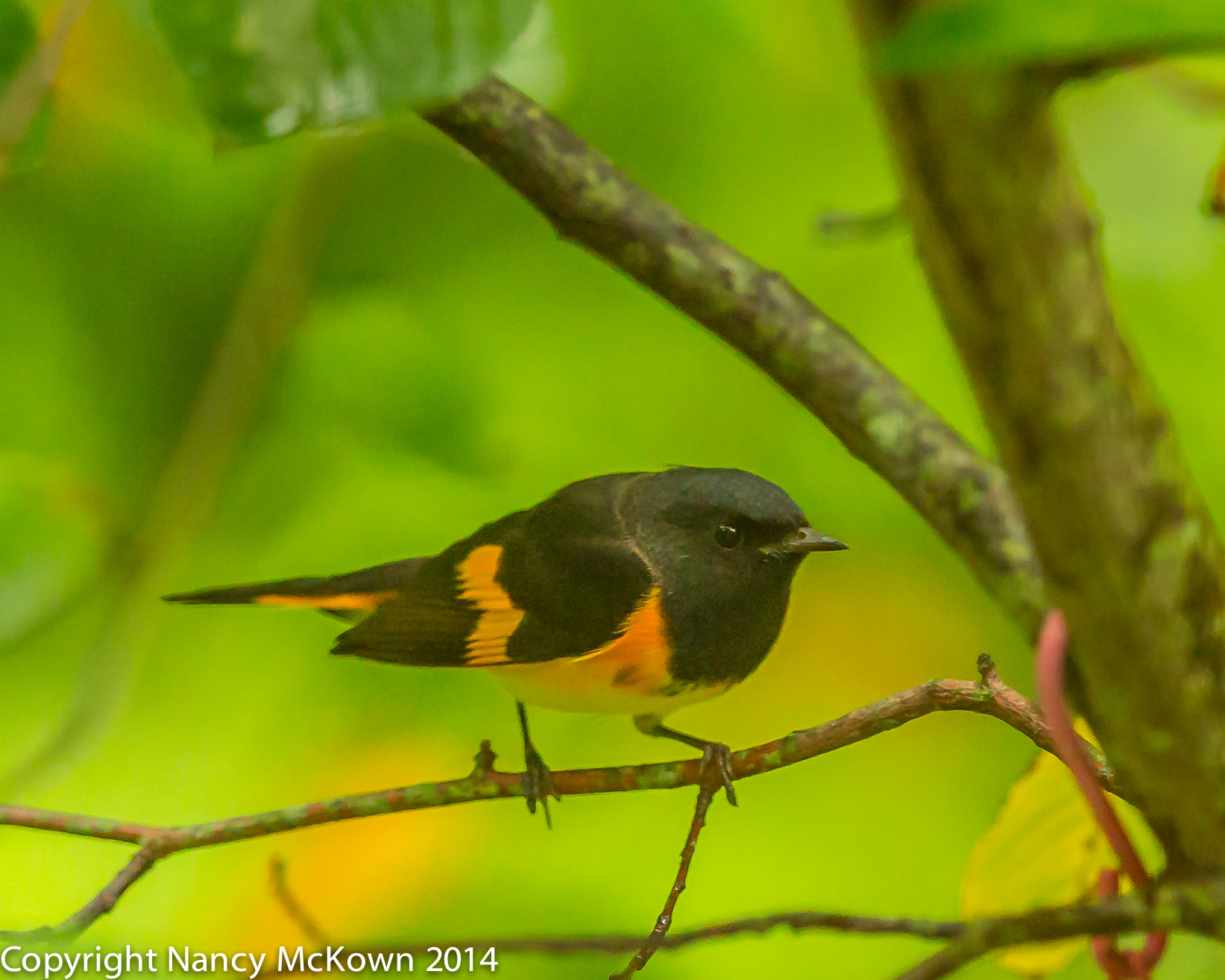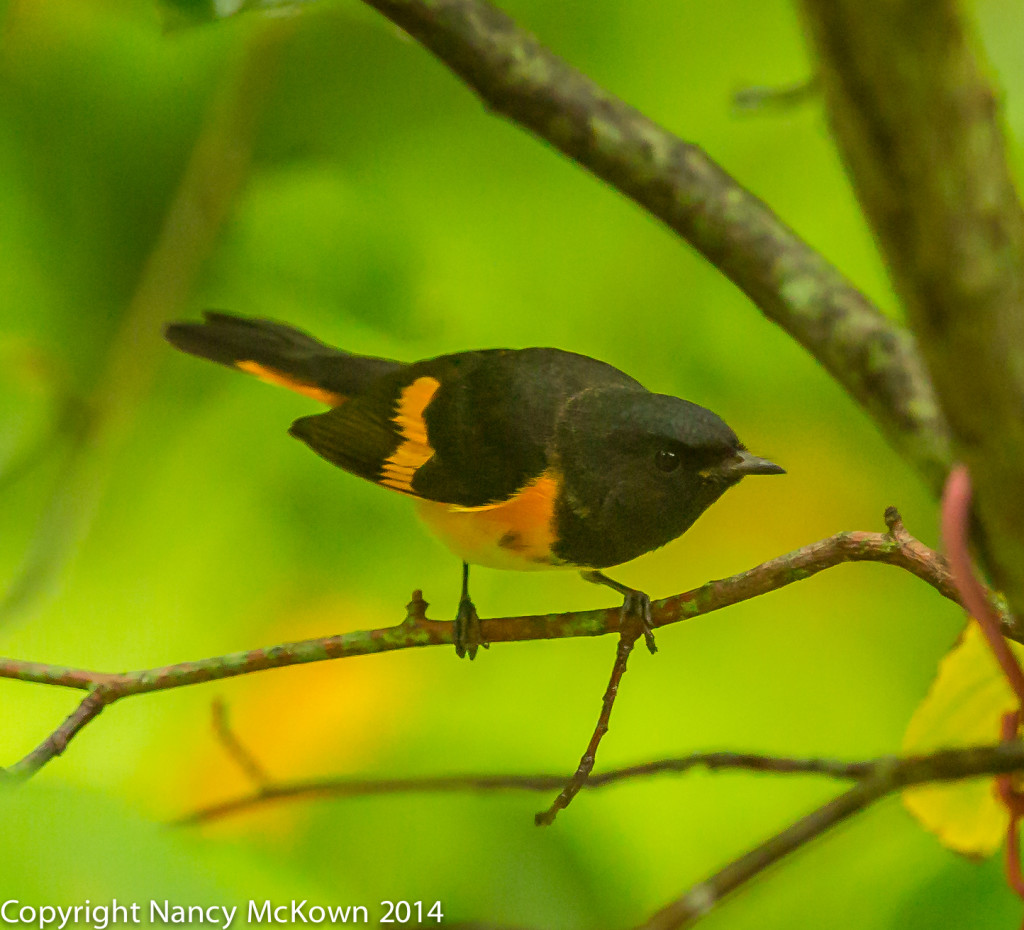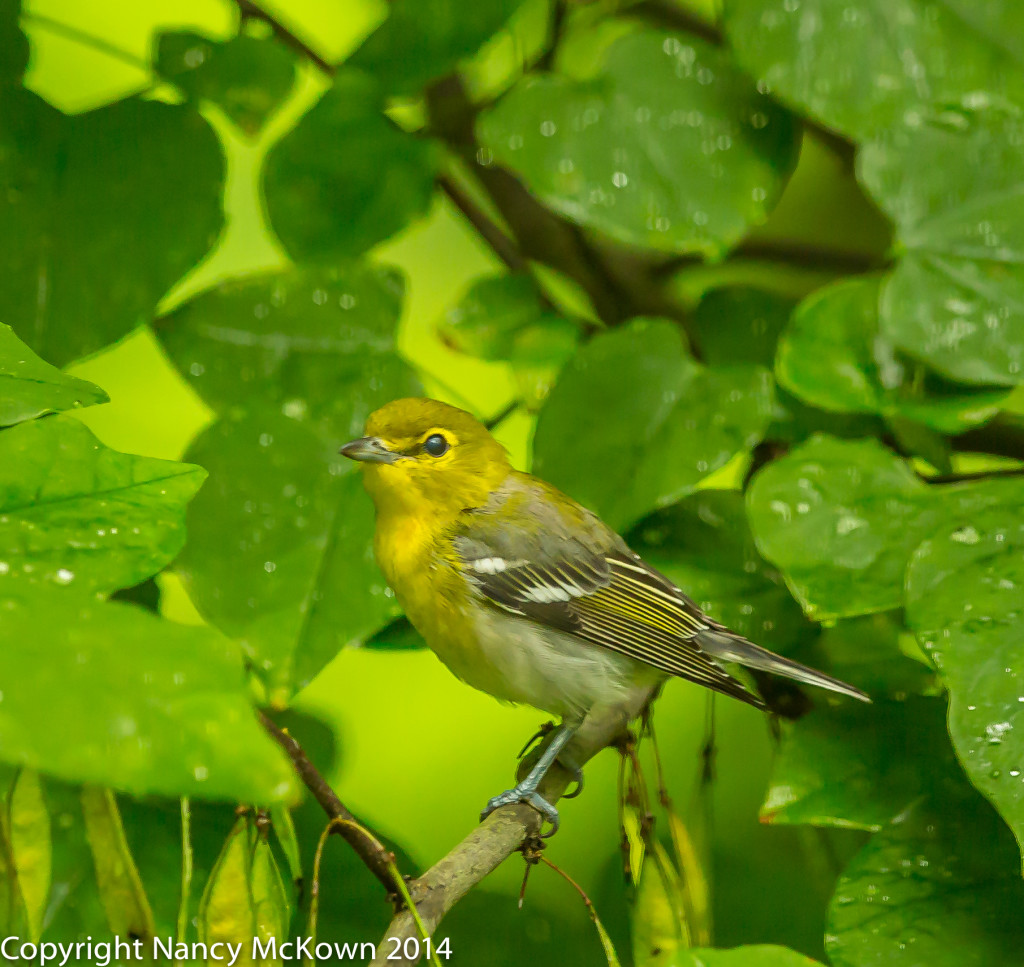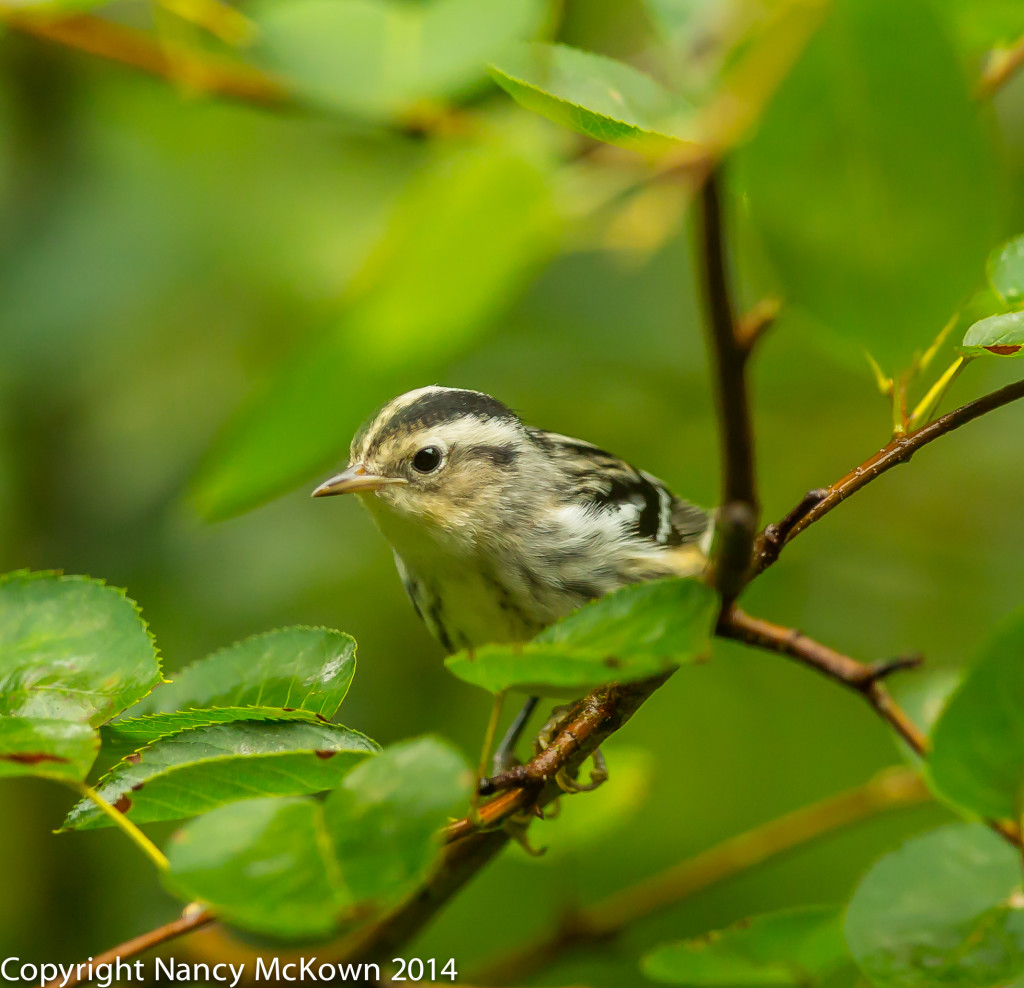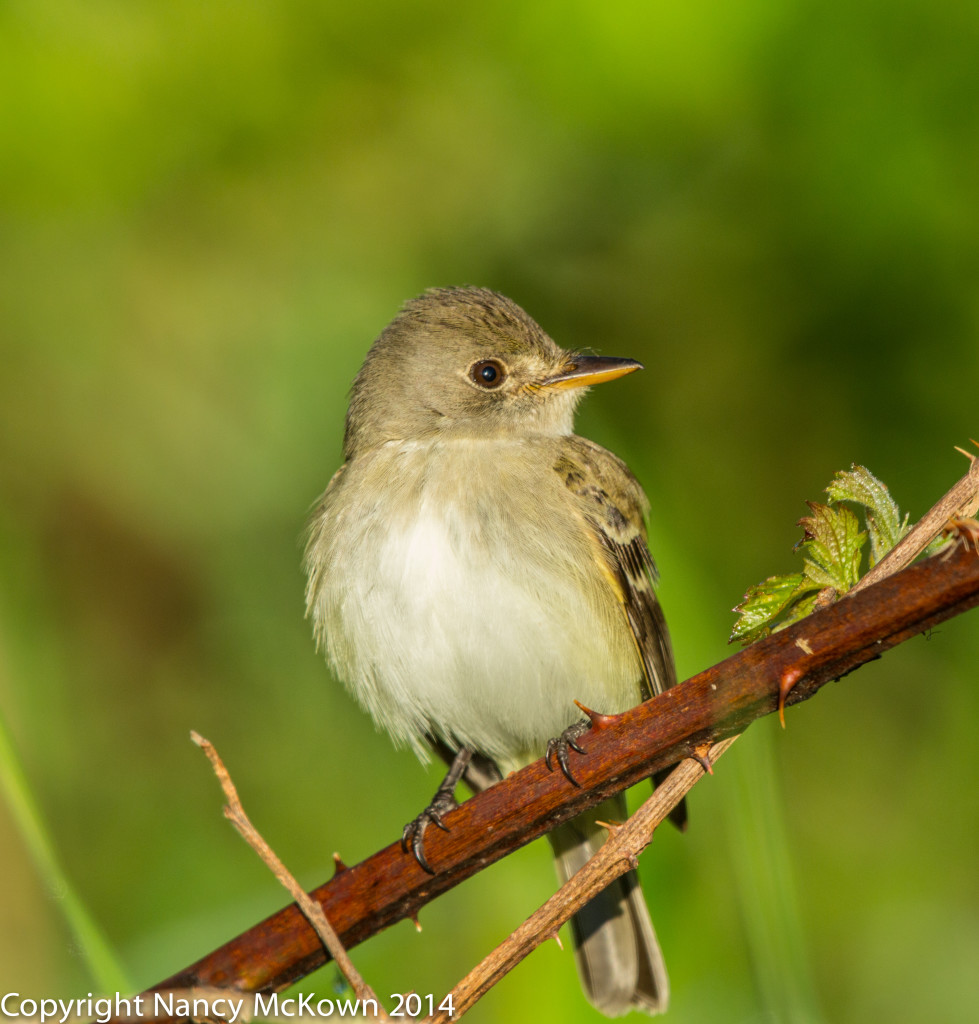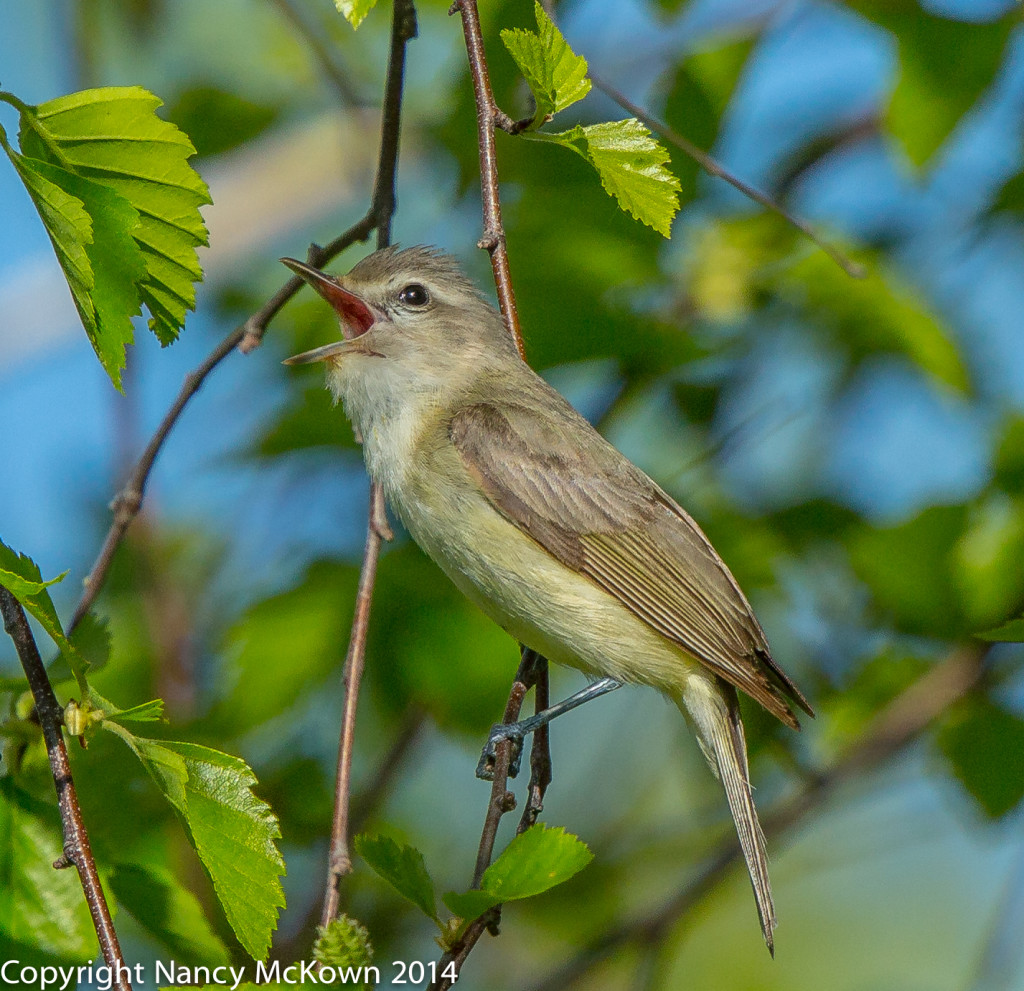Photographing a Blue Headed Vireo
Blue Headed Vireos appear more gray than blue during Fall migration. What makes them unmistakable are those lavish white spectacles on that gray hood. It starts with a heavy but incomplete eye ring that extends down to its thick hooked beak and into the neck and breast areas. The colorful olive green with black yellow and white patterns on his back don’t quite cover up the flecks of gray that trickle down from his head.
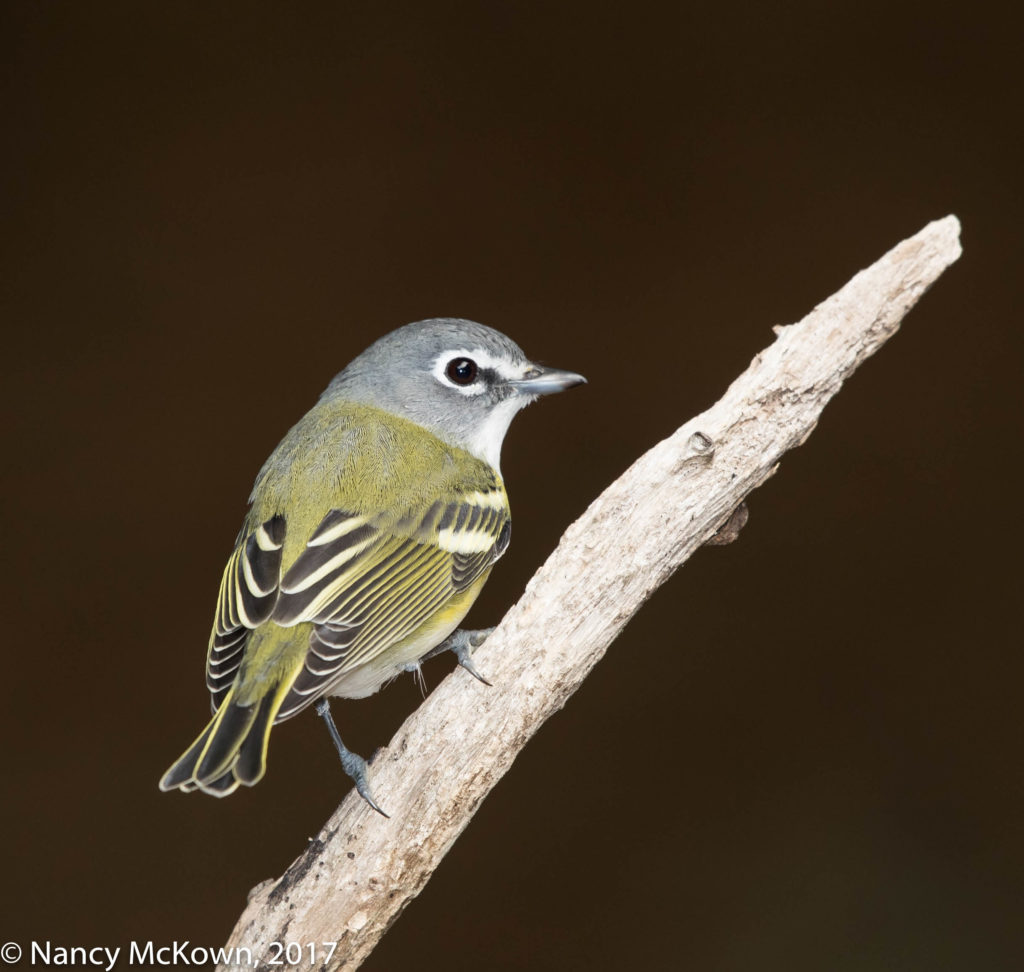
ISO400; f/8; 1/250 Second
Curious Enough to Pose patiently
Flash. Figuring Out This Essential Tool
Flash enhancement has proven to be an essential tool when photographing in my darkly lit woods, assuming I get it right. As I set up the flash for this shoot, I planned to selectively brighten the vireo’s face and body, while leaving the background dark. My exposure parameters worked well partly because this smallish bird was only 15-16 feet away – an excellent distance for the fresnel enhanced flash.
The Distance Factor
The flash is designed to work with the camera to gauge the ambient light reflecting off of the subject and calculate how much flash is needed to maintain exposure parameters. The flash sends a weak pre flash to determine the amount of flash needed- but if the subject is distant, that pre flash would most certainly fall off and be unable to send critical info back to the camera. So experimentation using flash exposure compensation (FEC) becomes necessary, assuming the bird sticks around. (NOTE: I could always boost underexposed images after the shoot in post processing. I rarely do this because I simply can not replicate the quality of brightening in post processing that I can achieve in camera, at least not without repercussions to the final image.)
At times, ETTLII Flash with fresnel extender delivers too much light…depending on how close the lens is to the subject. This is because the blast from fresnel flash extenders are always head-on… and concentrated. It is not suppose to scatter in multiple directions, but instead narrow its angle of coverage and gain distance. Perch location is critical. (NOTE: The flash bracket is essential to raise the flash off of the hot shoe and over the axis of the lens, hopefully casting the unwanted shadows to places where they won’t be bothersome…like below or behind the subject.)
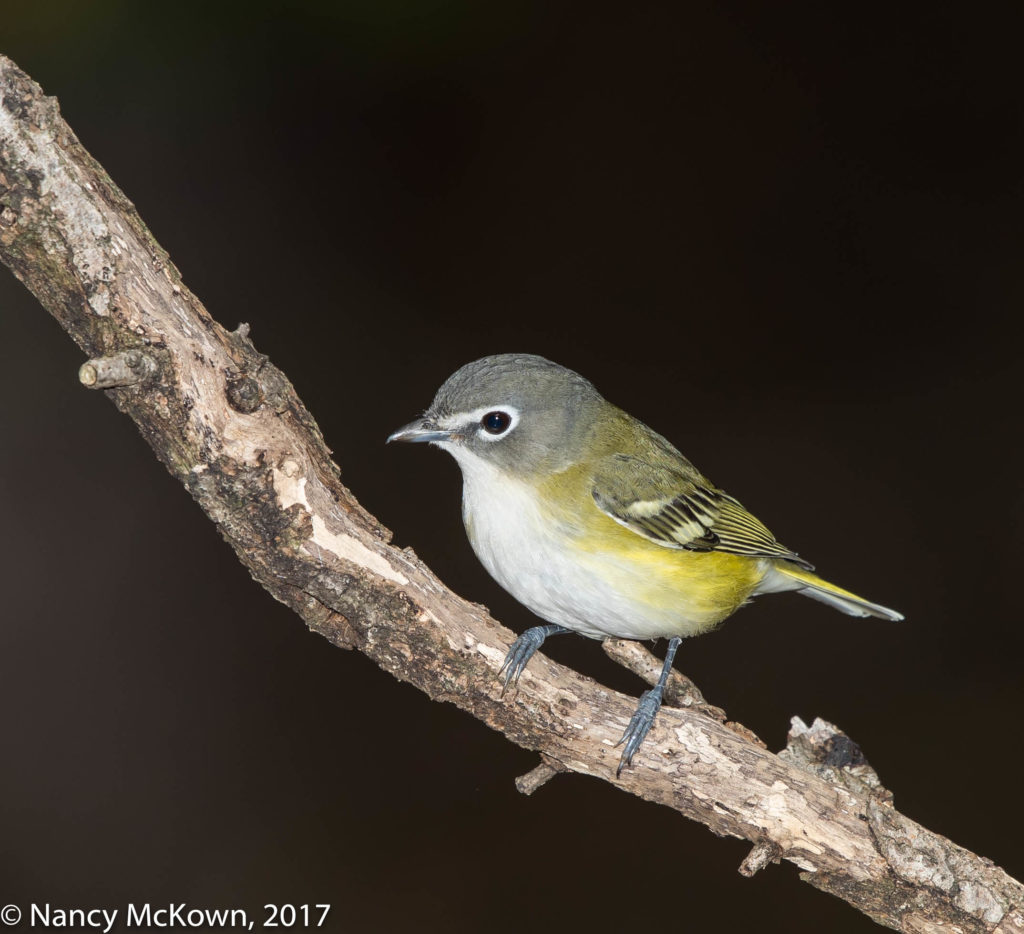
More of a Frontal view.
ISO400; f/8; 1/250 Second
Computational Powerhouses
My dSLR camera and flash are designed to work together in the way of sophisticated computers. Trying to understand precisely how the camera and flash use their computational power to meter reflected light is beyond me…. especially since it is so difficult to predict what a Canon camera will do when Evaluative mode is engaged. This multi-level internal light metering system evaluates whatever fills the frame using algorithms covering a complex arrangement of variables including the parameters preset in the camera and information taken in through the lens. (NOTE: Conditions affecting the light’s direction, tone, intensity, absorption and bouncability will impact how light travels through the lens and is evaluated by the camera and flash. To read about the physics of how light travels and reflects off an object, visit this link.)
So much to think about! Overall, I find that given all these variables and the speed at which calculations must be made, the rate of light metering success is very good, despite the distance of the subject. When the camera, the flash and the photographer get it right, it’s a good day.
